As the warm season arrives, one of the most exciting moments for any fruit gardener is spotting that very first bloom — a sign that months of patience and care are beginning to pay off. For pomegranate enthusiasts, the appearance of the first Parfianka pomegranate flower marks the beginning of a rewarding journey filled with vibrant color, buzzing pollinators, and, eventually, jewel-like fruits bursting with sweetness.
In this post, inspired by the video “First Parfianka Pomegranate Flower of the Season (Ep. 110)”, we’ll dive deep into what makes the Parfianka variety so special, how to care for it during its flowering and fruiting stages, and why this moment is so important for gardeners who cherish the beauty and bounty of their fruit trees.
1. Meet the Parfianka Pomegranate: A Gem Among Varieties
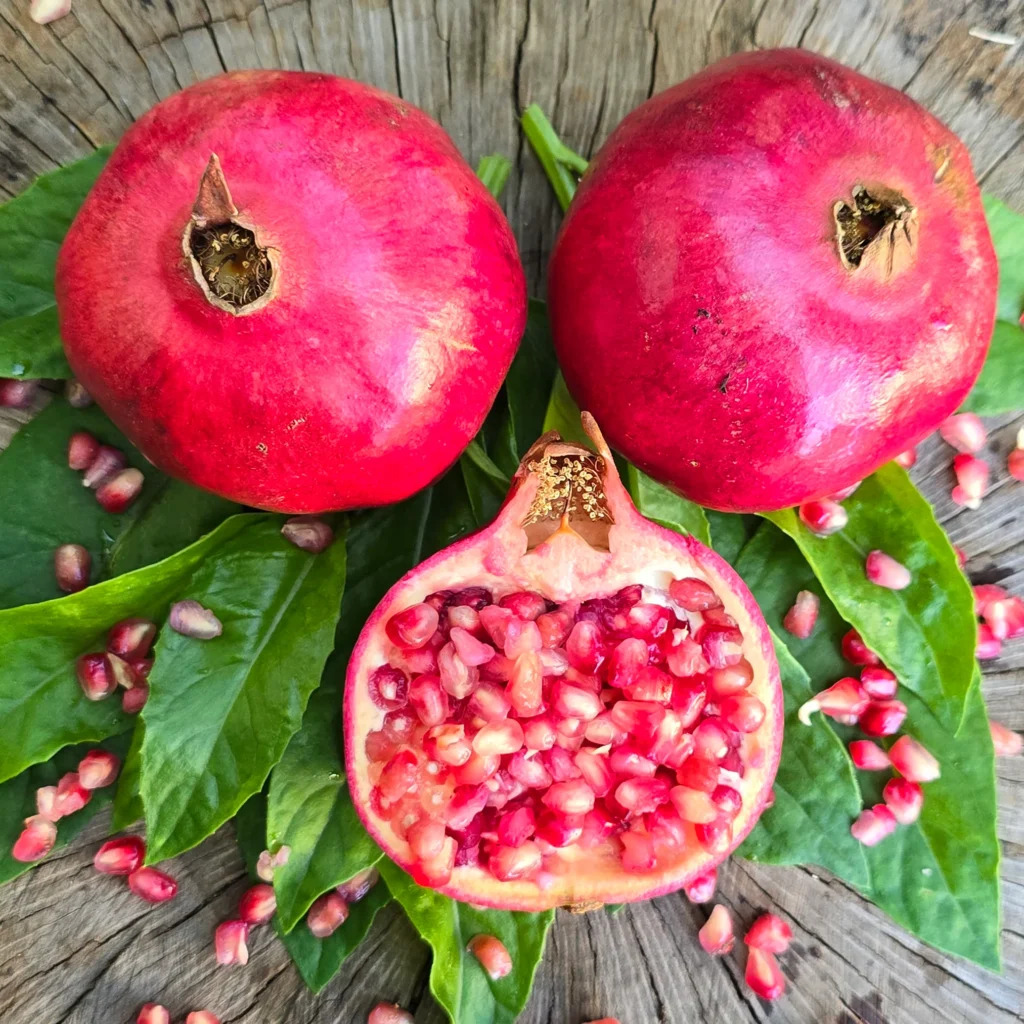
Among the many pomegranate cultivars grown worldwide, the Parfianka pomegranate stands out as one of the best all-around performers. Originally from Central Asia (most likely Turkmenistan), Parfianka has gained immense popularity in home gardens for its exceptional flavor, high productivity, and ornamental beauty.
The tree is medium-sized, usually reaching about 8–10 feet tall, making it perfect for small gardens or even container growing. Its glossy, narrow leaves and showy orange-red flowers make it as attractive as it is fruitful. But the real reason gardeners love Parfianka lies inside the fruit — the deep red arils are juicy, sweet-tart, and bursting with flavor that’s been compared to a mix of cranberry and cherry with a hint of wine-like richness.
Moreover, Parfianka produces soft seeds, making it one of the most enjoyable pomegranate varieties for fresh eating. It’s not just beautiful — it’s also delicious and practical.
2. The Significance of the First Flower
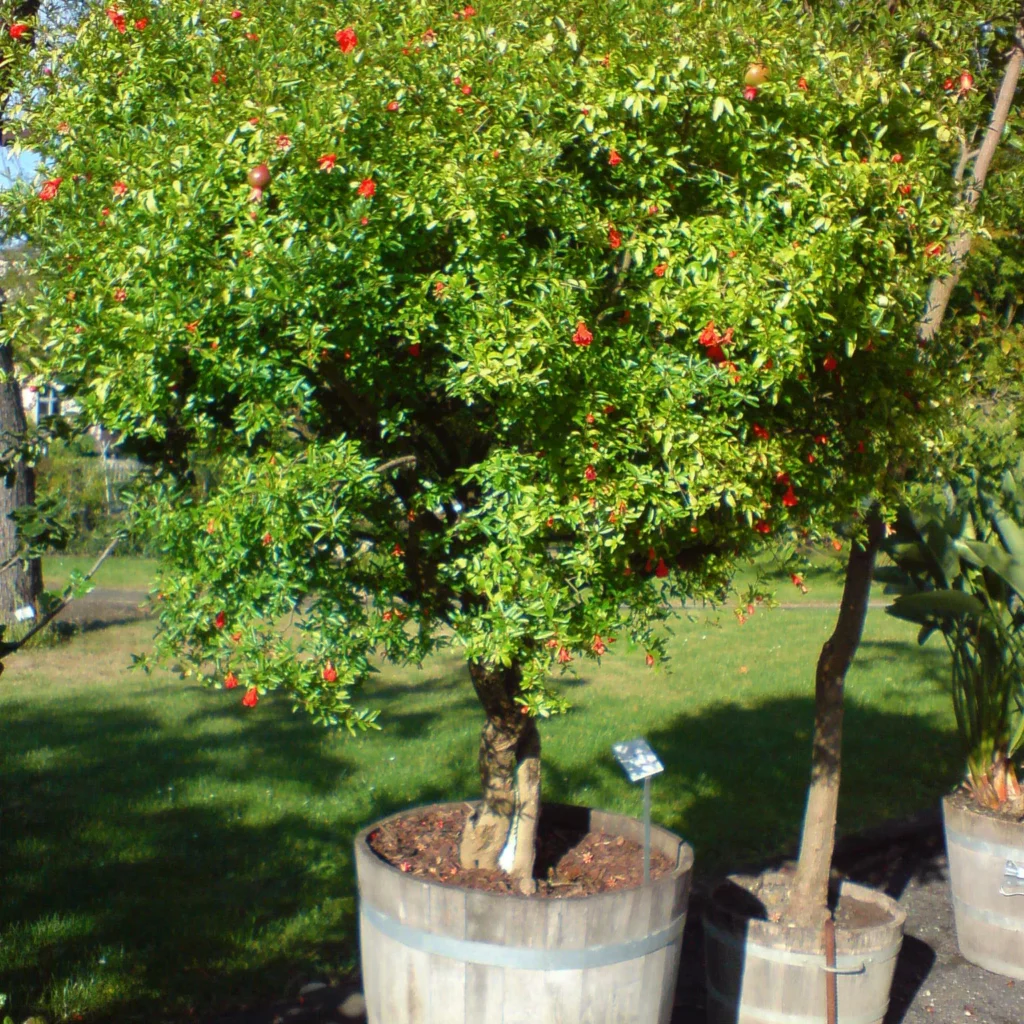
When that first flower appears in early to mid-spring, it’s more than just a blossom — it’s a signal that your tree is thriving. The first flower is like a promise: a sign that your Parfianka has come through winter successfully, that your watering and pruning have paid off, and that fruiting season is about to begin.
Pomegranate flowers are among the most striking in the garden. They appear as brilliant orange-red trumpet-shaped blooms with a waxy texture. Each flower forms on new growth, meaning the plant’s pruning and fertilizing in late winter or early spring directly affects the flowering stage.
When you see that first bloom, it’s time to:
- Observe pollinators — bees, butterflies, and even hummingbirds are frequent visitors.
- Ensure consistent watering — dry soil can cause flower drop.
- Avoid over-fertilizing — too much nitrogen can lead to lush leaves but few flowers.
This single flower marks the start of a long chain of blossoms that will develop into dozens of fruits by late summer or fall.
3. Conditions That Encourage Early and Healthy Blooms
Getting your Parfianka pomegranate to flower early and prolifically depends on a few key factors:
a. Sunlight
Pomegranates are sun lovers. They need at least 6–8 hours of full sunlight each day to produce healthy flowers and fruit. If your plant is grown in a pot, place it in the brightest location possible.
b. Temperature
Flowering typically begins once daytime temperatures reach the mid-70s°F (24°C) and above. Parfianka is quite adaptable and can tolerate both cool winters and hot summers, making it an ideal choice for Mediterranean or subtropical climates.
c. Watering
While pomegranates are drought-tolerant once established, they need consistent moisture during the flowering and fruiting stages. Deep watering once or twice a week encourages the plant to send energy to both roots and blooms. Avoid shallow watering — it promotes weak root systems.
d. Fertilization
Feed your tree with a balanced, slow-release fertilizer in early spring. Too much nitrogen can delay flowering, so choose one with moderate nitrogen content and a good balance of phosphorus and potassium to promote blooming and fruit development.
e. Pruning
Parfianka pomegranates flower on new wood, meaning proper pruning is essential. In late winter or early spring, remove dead or crossing branches, open up the center of the plant for better air circulation, and encourage new shoots. The new growth that follows is where your flowers — and fruits — will appear.
4. The Beauty of the Bloom: What to Look For
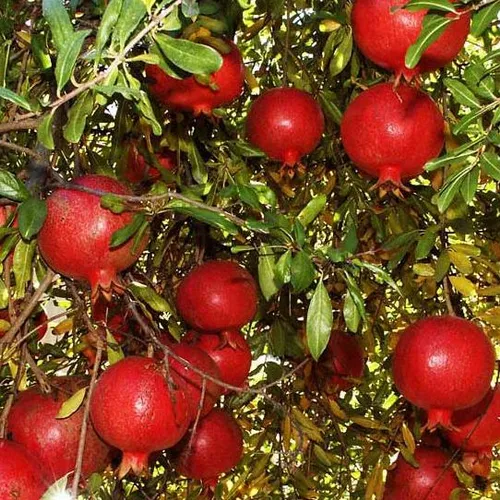
A healthy Parfianka bloom starts as a tight bud, gradually unfolding into a bright orange-red trumpet-shaped flower. Each bloom consists of multiple petals with a waxy texture that catches the sunlight beautifully.
You’ll often notice two types of flowers:
- Male flowers, which drop after blooming, and
- Bisexual (fertile) flowers, which develop into fruit.
You can identify fertile flowers because they’re slightly larger and have a swollen base — this is where the pomegranate will form.
This is a perfect time to attract pollinators. While pomegranates are self-pollinating, pollinator activity significantly improves fruit set and quality. If your area has few bees, lightly shaking the branches or using a small paintbrush to transfer pollen between flowers can help.
5. From Flower to Fruit: The Journey Begins
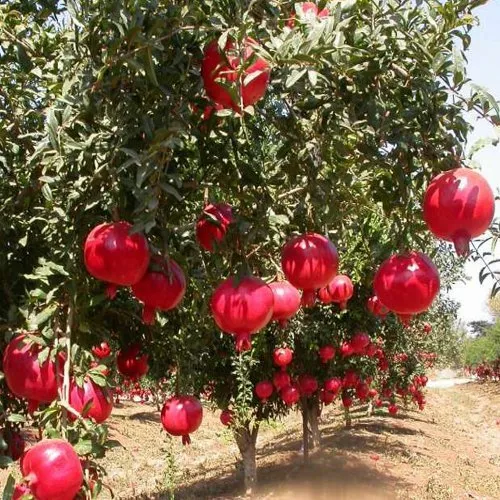
Once the first flower sets fruit, the transformation is slow but mesmerizing. Over the following weeks, the tiny green ovary at the base of the bloom begins to swell. Gradually, it hardens into the distinctive round fruit we recognize as a pomegranate.
During this phase:
- Keep watering consistently to avoid fruit cracking.
- Mulch around the base to retain soil moisture.
- Avoid moving or disturbing potted plants too much — stress can cause fruit drop.
Parfianka pomegranates typically ripen around late summer to early fall, with fruits maturing 5–7 months after flowering. The reward for patience is spectacular: richly colored fruits filled with glistening red arils, each a burst of sweetness and tang.
6. Common Issues and How to Prevent Them
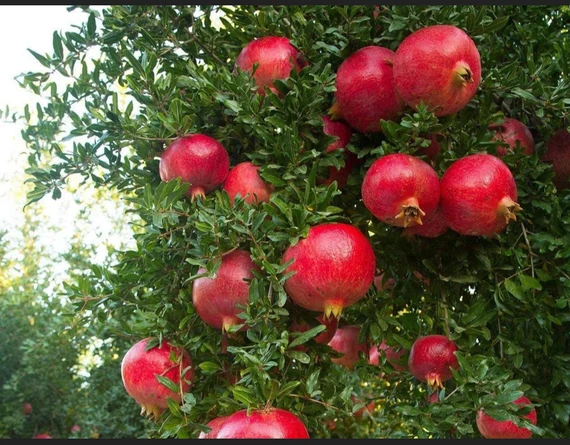
Even experienced gardeners face challenges with pomegranate trees. Here are a few common ones and how to prevent them:
a. Flower Drop
Sometimes, the first flowers fall off without setting fruit. This can be caused by irregular watering, nutrient imbalance, or simply natural thinning. Stay consistent with care and avoid fertilizing excessively.
b. Pests
Watch out for aphids, whiteflies, and leaf-footed bugs. These pests can damage new growth or pierce young fruits. Use neem oil or insecticidal soap early in the season to prevent infestations.
c. Fruit Cracking
If you notice fruit splitting before harvest, it’s usually due to sudden watering after a dry spell. Maintain even moisture and mulch to prevent drastic soil moisture fluctuations.
d. Fungal Issues
Overhead watering and poor air circulation can cause fungal diseases like leaf spot or root rot. Always water at the base and prune for airflow.
7. Why Parfianka Is Worth Growing
What makes the Parfianka variety truly special is its combination of beauty, resilience, and exceptional fruit quality. Unlike some older cultivars that are either too tart or have hard seeds, Parfianka delivers a perfect balance of sweetness and texture, making it a favorite among gardeners and chefs alike.
Beyond its flavor, the Parfianka pomegranate has ornamental value — the lush green foliage and vibrant flowers make it an eye-catching addition to any garden or patio. Even if you’re growing it in a container, it rewards you with both aesthetics and produce.
Plus, pomegranates are packed with antioxidants, vitamin C, and anti-inflammatory compounds, offering numerous health benefits. From fresh eating to juicing and cooking, Parfianka’s versatility is unmatched.
8. The Emotional Reward of the First Bloom
For many gardeners, the first bloom of the season is a deeply emotional moment. It represents renewal, persistence, and the beauty of nature’s cycles. Watching your Parfianka pomegranate transition from a dormant tree to a flowering beauty is both inspiring and gratifying.
That single flower is not just the start of fruiting season — it’s a symbol of growth, care, and hope. Whether it’s your first year growing Parfianka or your tenth, each bloom feels like a victory.
Final Thoughts
The first Parfianka pomegranate flower of the season is more than just a pretty sight — it’s a celebration of what’s to come. It marks the beginning of months filled with nurturing, watching, and eventually harvesting one of nature’s most exquisite fruits.
By providing the right sunlight, balanced care, and consistent attention, you’ll soon enjoy the transformation of those fiery blossoms into ruby-red fruits that taste as incredible as they look.
So, as you stand in your garden and admire that first bloom, take a moment to appreciate how far your plant — and you — have come. Because in gardening, every flower tells a story, and the first Parfianka bloom is one worth celebrating.
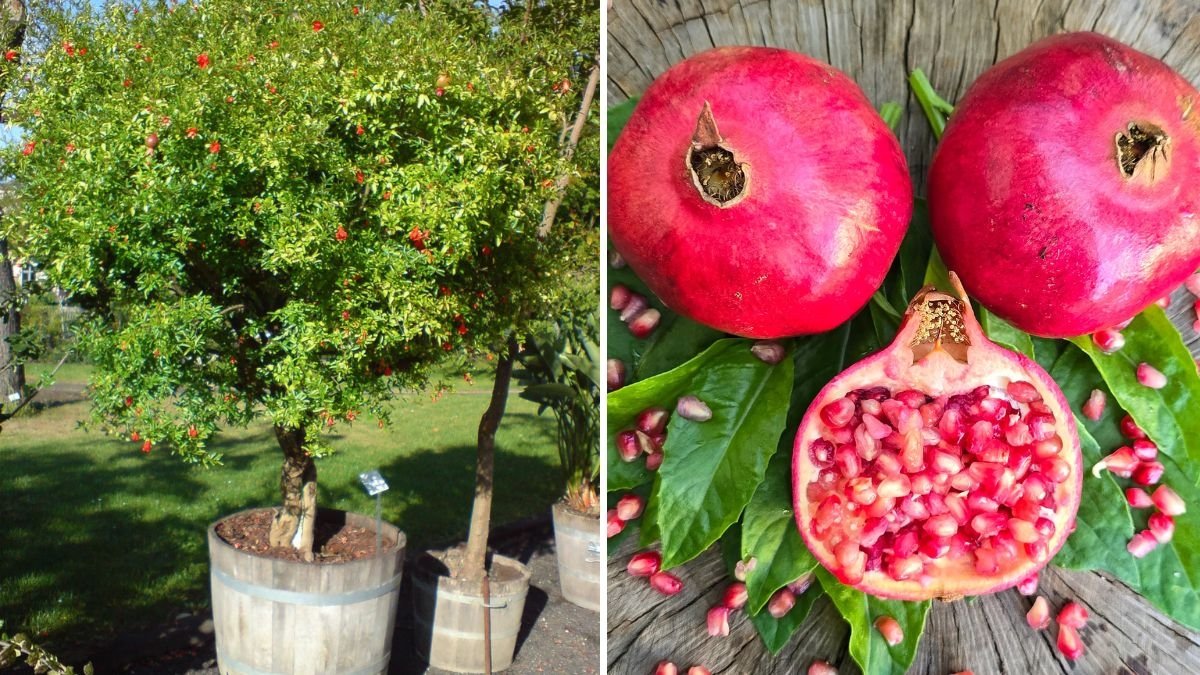
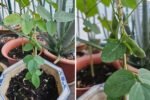




Leave A Comment